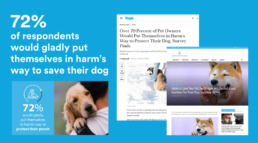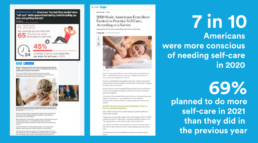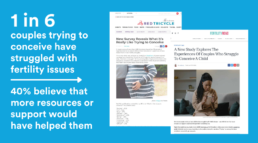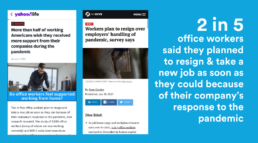Thinking of conducting research for a PR campaign? This is our quick guide to using PR surveys to create compelling content and generate earned media coverage.
Research is your friend when it comes to PR and media campaigns. If you get it right, not only will you gain valuable insights into what makes your target audience tick, you will unearth interesting, relevant and relatable data to make your brand storytelling really connect.
PR surveys help to generate newsworthy talking points so you can build campaigns, grab headlines and increase exposure for your brand.
What is a PR survey?
I’m glad you asked! A PR survey is typically a piece of quantitative research, conducted online with a panel of opted-in respondents. Who you poll is up to you and will vary according to your brand, your target audience and the aim of your campaign.
Depending on your research partner, your questions can be added to an omnibus survey where respondents are polled on a wide range of topics submitted by you and other research clients. Or, as we do at OnePoll, a custom PR survey is built and conducted exclusively for you.
Whether an omnibus or custom survey, your research agency should provide help with drafting your questionnaire, to ensure formatting is correct, data is accurate, and results can be interpreted properly. Your research should also adhere to market research best practice guidelines – such as those set out by the American Association for Public Opinion Research (AAPOR).
What makes a good PR survey?
A good PR survey will help you develop a strong data-led story angle for your brand. Research can reveal off-the-wall findings, it can debunk common myths, or help you bring attention to unique and shared experiences.
Whether you’re looking for light-hearted stats or deeper emotional insights, one thing is for sure – a PR survey story has to be newsworthy and it must align with the brand that’s commissioning it.
Pet food brand Just For Dogs commissioned an online poll of 2,000 dog owners to mark ‘National Love Your Pet Day’. The resulting survey story about dog owners’ love for their furry friends secured headlines across news sites and lifestyle publications.
Our custom PR survey for wellness software company Vagaro asked 2,000 Americans about their self-care habits. The story earned extensive media coverage and multiple links to the Vagaro website, where the key findings and visual assets were also published.
Who you gonna poll?
For a credible piece of research, you need to get the numbers right.
- We recommend 15-25 questions for PR surveys. Sizeable enough to get the depth of data, but short enough to keep respondents engaged.
- For a ‘general population’ survey of American adults, we recommend around 2,000 respondents. This is a good sample size for the media and, working with a research partner, you should be able to get online survey responses quickly and easily.
- For more niche demographics such as business owners, teachers, gamers, C-suite professionals, you can poll smaller numbers.
- If you’re conducting international or regional research, you could gather responses from 500 panelists per country or 100 per state, for example, depending on the demographic. Aim for a sample size that can be achieved in a short time frame and substantial enough to yield robust results.
This study for Clearblue’s Conceivinghood campaign polled 1,000 Americans who had conceived or tried to conceive a child within the last two years. The survey asked participants about their experiences and generated media coverage on lifestyle, health and parenting sites.
Our B2B research for SilkRoad Technology was conducted with 1,500 office workers and 500 C-level executives based in the US. By polling different groups, we were able to explore and compare the differing perceptions between office workers and senior executives.
Top tips for survey success
It’s one thing running the research. It’s quite another to interpret the results and incorporate a robust data set into a campaign.
Here are some simple tips for conducting PR surveys:
- Work backward.
Start with a story or campaign idea and work back from there. Sometimes the research will reveal surprising results… but you should start with the outline of a story angle and build your questions from there. - Sense check.
If you think you have a great idea for a survey story, however rudimental, ask your co-workers or agency team for input. Brainstorming story angles and asking for responses to a question can really help you determine how much a topic hits the mark. - Be bold.
You don’t have to avoid tricky topics. Can you bring positivity to a challenging conversation, for example? Use research to understand what your customers want or worry about and position your brand as the solution to that problem. Be bold, but always be sensitive and respectful. - Don’t lead.
Avoid questions that will lead your respondents to answer in a specific way. Enable them to answer honestly and provide them with enough multiple-choice options. Limit your use of free-text answers – but remember they can be a useful tool to elicit unexpected responses and find interesting anecdotes for your campaign. - Tell it well.
Yes, the research forms the basis of your story. But don’t just present the stats. The data is there to support your storytelling. Grab attention with a good headline and keep their interest. This is where a decent number and range of survey questions pays off – the more you can pull from the data, the more depth you add to your story. - Keep it going.
Don’t limit your research data to one output. Publish and share content across your own channels – website (blog, news or campaign landing page), social media (key findings, headlines and visual assets), emails and collateral. Maintain momentum with follow-up research or regular survey-led campaigns over the longer term and increase your share of voice within your industry and for topics relevant to your brand.
OnePoll has been conducting custom research and PR surveys for over 15 years. We provide custom research services and earned media packages to brands and agencies, alongside our partner 72Point Inc. As members of AAPOR – the American Association for Public Opinion Research, OnePoll researchers adhere to the principles and actions set out in the AAPOR Code. Our research team are also members of ESOMAR and MRS. Like to know more? Talk to our team or request a rate card.






